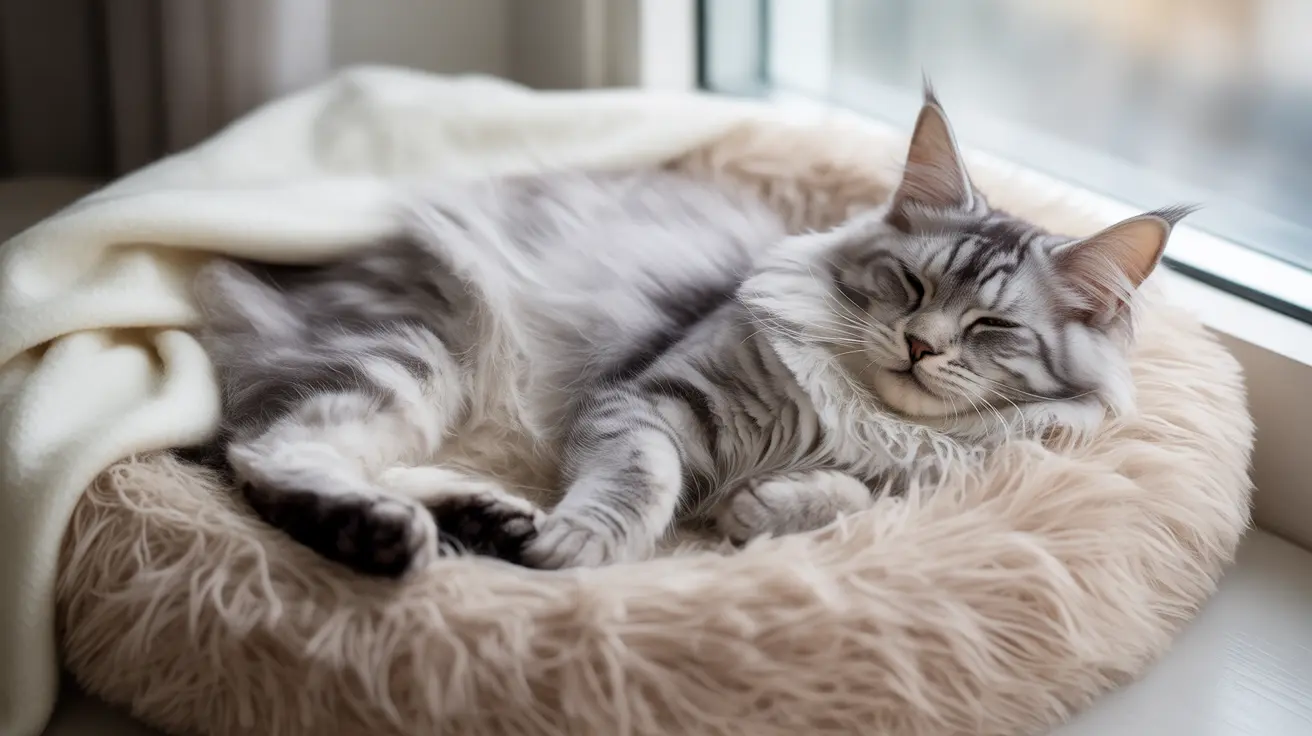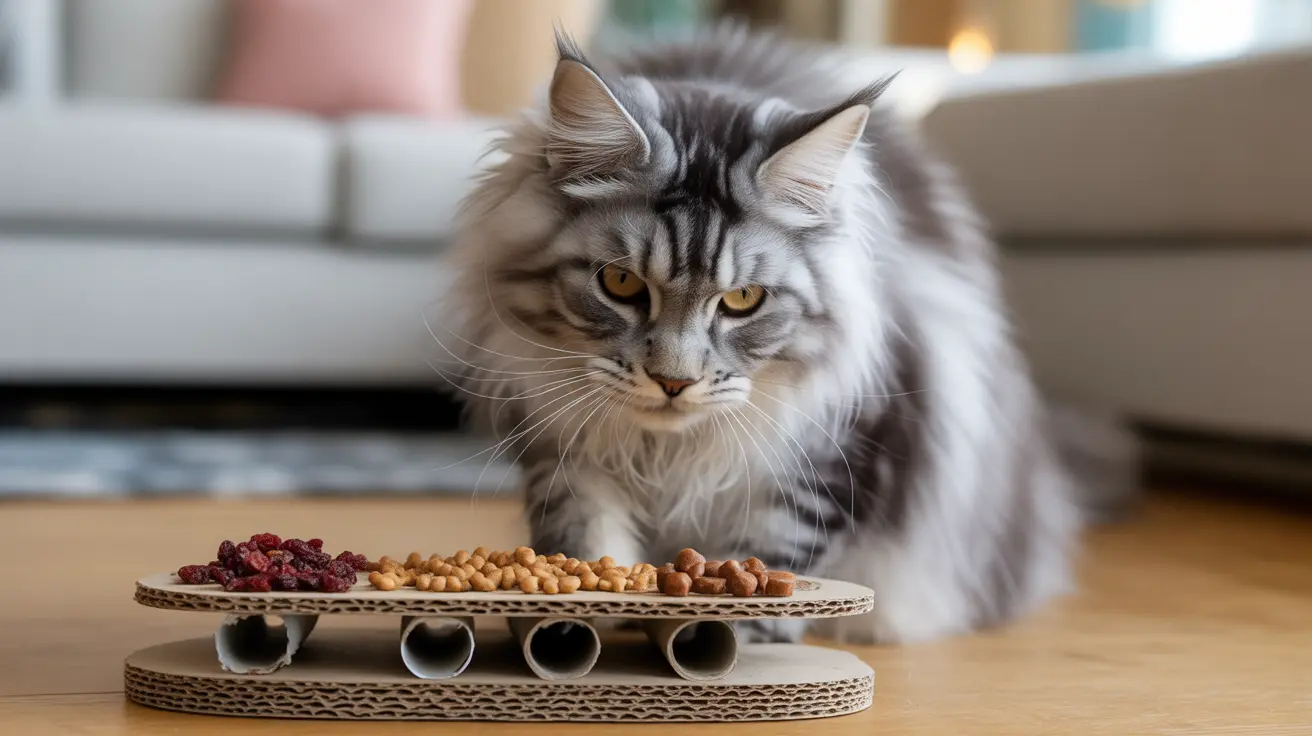How to Improve Cat Sleep Quality: A Complete Guide to Better Rest for Your Feline Friend
Understanding how to improve cat sleep quality is essential for every cat owner who wants to ensure their feline companion enjoys optimal health and well-being. Cats are naturally designed to sleep significantly more than humans, spending between 12 to 16 hours each day in various stages of rest. This extensive sleep requirement isn't laziness—it's a biological necessity that supports their energy conservation, immune function, and overall physical health.
Creating the ideal sleep environment for your cat involves more than just providing a cozy bed. From understanding their natural sleep cycles to recognizing signs of sleep disturbances, there are numerous strategies you can implement to enhance your cat's rest quality. Whether you're dealing with a playful kitten, an active adult cat, or a senior feline with changing needs, this comprehensive guide will help you create the perfect conditions for restorative sleep.
Understanding Your Cat's Natural Sleep Patterns
Cats have evolved as crepuscular animals, meaning they are naturally most active during dawn and dusk hours. This biological programming stems from their predatory instincts, as these twilight periods are when many small prey animals are most active. Understanding this natural rhythm is crucial when working to improve cat sleep quality throughout the day.
Your cat follows a polyphasic sleep pattern, taking multiple short naps rather than sleeping in one long stretch like humans do. These catnaps typically last between 50 to 113 minutes, with an average duration of around 78 minutes. During these rest periods, cats cycle through both non-rapid eye movement (NREM) and rapid eye movement (REM) sleep phases, just like humans do.
The frequent short naps serve an important evolutionary purpose—they allow cats to remain semi-alert to potential threats while still getting the rest they need. Even during light sleep phases, cats maintain heightened awareness of their surroundings, ready to spring into action if necessary. This is why respecting your cat's sleep schedule and avoiding unnecessary disruptions is so important for their well-being.
Age-Related Sleep Needs and Variations
Kittens and Sleep Requirements
Young kittens have the highest sleep requirements, often needing up to 20 hours of sleep per day. This extensive rest is crucial for their rapid growth and development, supporting brain development, immune system strengthening, and physical growth. During these early weeks and months, providing a safe, warm, and quiet sleeping environment is particularly important.
Adult Cat Sleep Patterns
Healthy adult cats typically sleep between 12 to 16 hours daily, depending on various factors including breed, lifestyle, and individual personality. Indoor cats may sleep slightly more than outdoor cats due to fewer environmental stimuli and hunting opportunities. The key to improving sleep quality for adult cats lies in maintaining consistent routines and providing appropriate mental and physical stimulation during their active hours.
Senior Cat Sleep Changes
Senior cats, generally those 10 years and older, often increase their sleep duration to 18 or even 20 hours per day. This increase occurs due to decreased energy levels, physical changes associated with aging, and a naturally reduced metabolic rate. Older cats may also experience changes in sleep quality due to age-related health conditions such as arthritis, which can interfere with their ability to rest comfortably.
Creating the Ideal Sleep Environment
Essential Elements for Cat Sleep Comfort
To effectively improve cat sleep quality, focus on creating multiple comfortable sleeping areas throughout your home. Cats need protected, quiet, draft-free, and warm sleeping spots for truly restorative sleep. The ideal sleeping area should be elevated enough to provide security while remaining easily accessible for your cat.
Temperature regulation plays a crucial role in sleep comfort. Cats prefer warm sleeping areas, and you can safely use heating pads designed for pets or provide warm blankets during colder months. However, always ensure these heating elements are specifically designed for pet use to prevent overheating or burns.
Multiple Sleeping Locations
Cats naturally enjoy having multiple sleeping places available, allowing them to choose based on their current preferences, the time of day, or environmental conditions. Don't be discouraged if your cat takes time to accept new beds—patience is key when introducing new sleeping areas. Place beds in various locations including quiet corners, sunny spots, and elevated areas like cat trees or shelves.
For outdoor cats, provide warm and dry sleeping areas in sheltered places such as covered areas in gardens or on terraces. These spaces should offer protection from weather elements while maintaining the security outdoor cats seek in their resting spots.
The Science Behind Feline Sleep
Energy Conservation and Sleep
The primary reason cats sleep so much relates to energy conservation. Hunting and exploring consume significant amounts of energy, and sleep allows cats to recharge their energy reserves efficiently. This biological imperative means that sleep serves as a critical component of your cat's overall health maintenance system.
Sleep Phases and Brain Function
During REM sleep phases, cats experience the deepest level of rest, which typically lasts about 5 to 7 minutes per cycle. During this phase, you might observe your cat twitching, moving their paws, or making small vocalizations—clear signs they are likely dreaming. This REM sleep is crucial for memory formation, brain development, and emotional processing.
Sleep also plays an important role in immune system function, helping cats maintain their health and recover from daily physical stresses. The restorative processes that occur during deep sleep cannot be replicated through light rest or conscious relaxation.
Recognizing Sleep Quality Issues
Signs of Poor Sleep
Monitoring your cat's sleep patterns helps ensure they're getting quality rest. Sudden changes in sleeping habits can indicate underlying health issues that require veterinary attention. Watch for signs such as restlessness during usual sleep times, difficulty settling into comfortable positions, or increased irritability after waking.
Senior cats may show particular signs of sleep disturbances, including increased vocalization, withdrawal from family activities, or changes in typical behavioral patterns. Pain from conditions like arthritis can significantly interfere with their ability to achieve comfortable, restorative sleep.
Health Conditions Affecting Sleep
Certain illnesses can cause cats to sleep more than usual, including hyperthyroidism, diabetes, kidney disease, liver disease, heart disease, and cancer. Conversely, some conditions may cause sleep disruption or restlessness. Physical injuries, muscle strains, torn ligaments, or arthritis can also increase sleep needs as cats rest to recover.
If you notice sudden changes such as loss of appetite, weight loss, excessive lethargy, or signs of pain accompanying sleep pattern changes, consult a veterinarian promptly for proper evaluation and treatment.
Optimizing Daily Routines for Better Sleep
Exercise and Mental Stimulation
The relationship between playtime and sleep cycles is crucial for maintaining healthy rest patterns. Encourage physical activity with safe toys and provide mental stimulation through puzzle feeders or treat-dispensing toys during your cat's active periods. This helps ensure they're appropriately tired when it's time to rest.
Boredom can lead to increased sleep and problematic behaviors such as destructiveness or over-grooming. Providing adequate stimulation during waking hours helps promote more restful, quality sleep during natural rest periods.
Establishing Consistent Routines
Maintaining consistent routines with regular feeding times and scheduled play sessions helps regulate your cat's natural sleep cycles. While cats cannot be forced into fixed sleep schedules, providing structure during their active periods supports their natural rhythms and promotes better rest quality.
Minimizing Sleep Disruptions
Household noise and activity can significantly impact your cat's sleep quality. Create quiet zones in your home where your cat can retreat for undisturbed rest. It's essential to train children and other family members to respect your cat's sleep needs—deep sleep phases should never be interrupted as this disrupts crucial restorative processes.
Special Considerations for Indoor vs. Outdoor Cats
Indoor Cat Sleep Needs
Indoor cats may require additional mental stimulation to prevent boredom-related excessive sleeping. Provide environmental enrichment through window perches, climbing structures, and rotating toy selections. Indoor cats often benefit from more structured play sessions to simulate hunting behaviors and promote healthy sleep-wake cycles.
Outdoor Cat Considerations
Outdoor cats typically have more varied sleep patterns due to environmental stimuli and seasonal changes. Ensure they have access to secure, weather-protected sleeping areas. During extreme weather conditions, consider providing additional shelter or bringing outdoor cats inside for safety and comfort.
Creating Pet-Friendly Household Rules
Bedroom Sharing Decisions
If you're considering allowing your cat to sleep in your bed, make consistent decisions to avoid confusion. Deciding whether a cat is allowed in the bedroom should be a household rule that everyone follows. If you choose to share your bed, ensure your cat has alternative comfortable sleeping spots available for times when bedroom access isn't appropriate.
Safety Considerations
Higher sleeping spots should be secured to prevent injuries during active dream phases when cats might move unexpectedly. Ensure cat trees, shelves, and elevated beds are stable and appropriately sized for your cat's weight and activity level.
Frequently Asked Questions
How many hours should my cat sleep each day?
Healthy adult cats typically sleep between 12 to 16 hours per day. Kittens may need up to 20 hours of sleep daily, while senior cats often sleep 18 to 20 hours due to decreased energy levels and age-related changes.
Is it normal for my cat to sleep in short bursts throughout the day?
Yes, cats naturally follow a polyphasic sleep pattern, taking multiple short naps averaging 78 minutes each rather than sleeping in one long stretch. This behavior allows them to remain alert to their environment while still getting necessary rest.
Should I wake my cat if they're sleeping too much?
Avoid waking cats from deep sleep as this disrupts important restorative processes. However, if you notice sudden increases in sleep accompanied by other symptoms like loss of appetite or lethargy, consult your veterinarian.
How can I tell if my cat is getting quality sleep?
Signs of quality sleep include your cat appearing refreshed after naps, maintaining normal activity levels during wake periods, and showing consistent sleep patterns. Cats experiencing quality rest should wake up alert and engage normally with their environment.
What should I do if my senior cat seems to have trouble sleeping comfortably?
Provide orthopedic beds in quiet areas to support aging joints. Consider softer bedding materials and ensure sleeping areas are easily accessible without requiring jumps or climbs that might cause discomfort.
Can stress affect my cat's sleep patterns?
Yes, stress or anxiety can cause significant changes in sleeping patterns. Environmental changes, new pets, or household disruptions can impact sleep quality. Maintaining consistent routines and providing secure sleeping areas helps minimize stress-related sleep issues.
How do I know when changes in my cat's sleep patterns require veterinary attention?
Consult a veterinarian if you notice sudden changes in sleep patterns accompanied by other symptoms such as loss of appetite, weight loss, excessive lethargy, signs of pain, or behavioral changes like increased irritability or withdrawal.
Conclusion
Improving cat sleep quality involves understanding your feline companion's natural sleep patterns and providing an environment that supports their biological needs. By creating comfortable, secure sleeping areas, maintaining consistent routines, and respecting their natural rest cycles, you can significantly enhance your cat's overall well-being. Remember that quality sleep is essential for your cat's physical health, mental state, and immune function.
Pay attention to changes in your cat's sleep patterns, as these can be early indicators of health issues requiring professional attention. With patience, observation, and the right environmental modifications, you can ensure your cat enjoys the restorative sleep they need to live a healthy, happy life.






